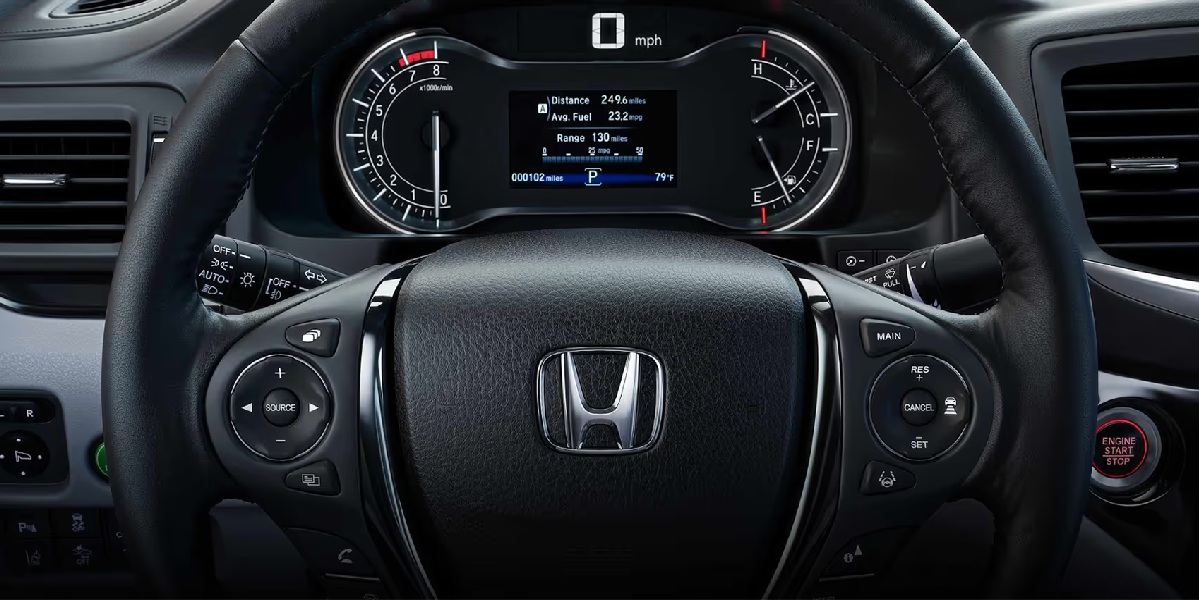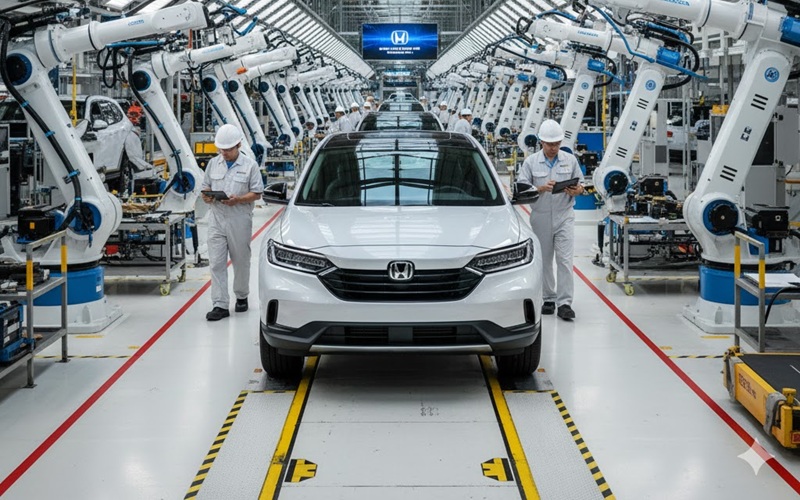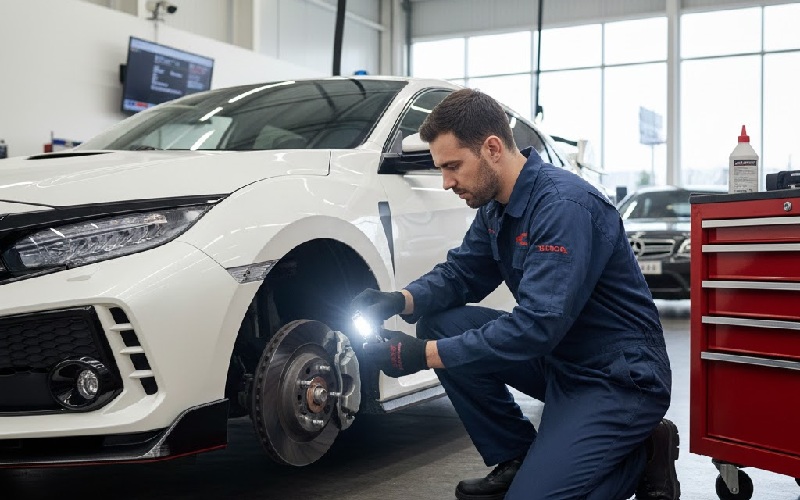The Honda innovative maintenance system has revolutionized vehicle servicing by moving away from fixed-interval maintenance to a more intelligent, usage-based approach. At the heart of this system are Honda service codes—alphanumeric indicators that precisely communicate which maintenance tasks your vehicle requires. Understanding these codes is essential for Honda owners seeking to maintain their vehicles in optimal condition while avoiding unnecessary service procedures.

The Evolution of the Honda Service Maintenance System
Honda introduced its Maintenance Minder system in the mid-2000s, replacing the traditional mileage-based service schedules. This intelligent system monitors various operating conditions, including engine revolutions, operating temperatures, trip lengths, and cold starts to determine when specific maintenance services are needed rather than relying on arbitrary distance intervals.
The system uses two types of indicators:
- A percentage-based oil life indicator that counts down from 100% to 0%
- Specific service codes that appear when particular maintenance tasks are required
This approach recognizes that different driving patterns affect maintenance needs differently. For instance, frequent short trips with cold starts cause more engine wear and oil degradation than highway cruising, even if the total distance travelled is the same.
Main Service Categories: A and B
Honda maintenance codes are divided into two primary categories, each indicating a different level of service complexity.
Service A: Basic Maintenance
When your vehicle displays “Service Due Soon” with code A, it indicates the need for basic maintenance. This typically appears when the oil life indicator approaches 15% and includes:
- Engine oil replacement (typically 4.2 to 4.5 liters for four-cylinder engines)
- Inspection of brake components (checking pad thickness, typically warning at 3-4 mm remaining)
- Tire inspection and rotation
- Fluid level checks and adjustments
- Inspection of exterior lights and vehicle systems
Service A typically occurs every 8,000 to 12,000 kilometers under normal driving conditions, though this can vary significantly based on your driving patterns.
Service B: Comprehensive Maintenance
Code B indicates a more comprehensive service requirement and typically appears when oil life reaches 15% after a longer interval or under more demanding conditions. Service B includes:
- All Service A items
- Engine oil and filter replacement
- Inspection of all fluid levels and condition
- Inspection of suspension components
- Brake service (including calliper lubrication)
- Comprehensive multi-point inspection
- Detailed inspection of belts, hoses, and other wear components
Service B generally occurs every 24,000 to 32,000 kilometers but may appear sooner under severe driving conditions. The timing is adaptive and based on vehicle operational data rather than fixed intervals.
Sub-Codes: 1-6
In addition to the main service categories, the Honda service system displays numeric sub-codes (1-6) that indicate specific maintenance tasks beyond the basic A or B service. These appear alongside the main code (e.g., A1, B2, B136) and represent the following services:
Sub-Code 1: Tire Rotation
When code 1 appears, your vehicle requires tire rotation to ensure even wear and maximize tire life. Honda recommends:
- Rotation every 12,000 kilometers under normal conditions
- Inspection of tire pressure (typically 220-240 kPa when cold)
- Checking tread depth (recommendation to replace at 1.6 mm of remaining tread)
- Inspection for irregular wear patterns
This service helps extend tire life and maintain optimal handling and fuel efficiency.
Sub-Code 2: Air Filtration Service
Code 2 indicates the need to service the vehicle’s filtration systems:
- Engine air filter replacement (typically every 24,000-48,000 kilometers)
- Cabin air filter replacement (typically every 24,000-36,000 kilometers)
- Inspection of air intake passages
- Dust and pollen filter service for climate control systems
These filters ensure clean air for the engine and passenger compartment, with replacement intervals varying based on environmental conditions and driving environment.
Sub-Code 3: Transmission and Transfer Case Service
When code 3 appears, your Honda requires attention to its transmission system:
- Automatic transmission fluid inspection or replacement (typically 3.1-3.5 liters)
- Manual transmission fluid service when applicable
- Transfer case fluid service for all-wheel-drive models
- Inspection of transmission operation and shift quality
- Differential fluid service when applicable (typically 0.8-1.5 liters)
The interval for code 3 varies significantly between models, typically occurring every 40,000-80,000 kilometers, depending on the transmission type and driving conditions.
Sub-Code 4: Spark Plug and Valve Adjustment
Sub-code 4 addresses ignition and valve train maintenance:
- Spark plug replacement (iridium plugs typically last 100,000-120,000 kilometers)
- Valve clearance inspection and adjustment if necessary
- Ignition timing check
- Inspection of ignition components
- Fuel injection system inspection
This maintenance is vital for maintaining engine performance, efficiency, and emissions. Modern Honda vehicles with iridium spark plugs see this code appearing less frequently than older models.
Sub-Code 5: Engine Coolant Service
Code 5 indicates it’s time to replace the engine coolant:
- Coolant replacement (system capacity typically 5.5-7.5 liters)
- Cooling system pressure test
- Radiator, hoses, and water pump inspection
- Thermostat operation check
- Electric cooling fan verification
Long-life coolant typically requires replacement every 100,000-120,000 kilometers or 5 years, whichever comes first.
Sub-Code 6: Rear Differential Service
For vehicles with rear or all-wheel drive systems, code 6 indicates:
- Rear differential fluid replacement (typically 0.8-1.5 liters)
- Transfer case inspection when applicable
- Driveshaft and CV joint inspection
- Propeller shaft lubrication when applicable
- Four-wheel drive system function verification
This service typically occurs every 48,000-72,000 kilometers, depending on the model and how you use the vehicle, with more frequent intervals for vehicles used in demanding conditions.
How to Interpret Combined Codes
The Honda service system often displays combinations of these codes to communicate multiple service needs simultaneously. For example:
- A123: Indicates a Service A with tire rotation (1), air filter replacement (2), and transmission service (3)
- B1456: Indicates a Service B with tire rotation (1), spark plug replacement (4), coolant service (5), and rear differential service (6)
These combinations optimize your maintenance scheduling by grouping services logically based on their due intervals.
Service Code Timeline and Frequency
While the system adapts to your specific driving patterns, there are general guidelines for when these codes typically appear:
| Service Code | Typical Interval | Description |
| A | 8,000-12,000 km | Oil change and basic inspection |
| B | 24,000-32,000 km | Comprehensive service |
| 1 | 12,000 km | Tire rotation |
| 2 | 24,000-48,000 km | Air filter replacement |
| 3 | 40,000-80,000 km | Transmission service |
| 4 | 100,000-120,000 km | Spark plug/valve adjustment |
| 5 | 100,000-120,000 km | Coolant replacement |
| 6 | 48,000-72,000 km | Rear differential service |
Note that these intervals can vary significantly based on:
- Driving conditions (urban vs. highway)
- Climate and environmental factors
- Vehicle usage patterns (towing, frequent short trips)
- Vehicle model and year
Severe Driving Conditions and Their Impact
The maintenance system adjusts service intervals based on driving conditions. The following conditions are considered “severe” and typically result in more frequent service reminders:
- Extremely hot (over 35°C) or cold (below -15°C) operating environments
- Extensive idling or low-speed driving for extended periods
- Frequent short trips (less than 8 kilometers)
- Driving on rough, muddy, or salt-covered roads
- Towing trailers or carrying heavy loads
- Mountain driving with frequent ascending and descending
Under these conditions, service codes appear at shorter intervals, particularly for oil changes (Service A and B) and transmission services (Code 3).
Model-Specific Service Code Variations
While the fundamental code system is consistent across the Honda lineup, there are some model-specific variations worth noting:
Honda Hybrid Vehicles
Hybrid models like the Insight, CR-Z, and hybrid versions of the Accord and CR-V include additional codes for their unique components:
- Hybrid battery cooling system service
- High-voltage system inspection
- Regenerative braking system evaluation
These typically integrate with the standard code system rather than creating new codes.
Honda Powersports and Equipment
Honda powersports products (motorcycles, ATVs) and power equipment use a simplified version of the service code system with different intervals appropriate to their usage patterns and engine designs.
How to Reset the Maintenance Minder
After completing the indicated services, you must reset the maintenance minder system. The procedure varies by model year and vehicle type, but generally involves:
- Turning the ignition to ON (but not starting the engine)
- Pressing the SELECT/RESET button until the engine oil life indicator appears
- Pressing and holding the SELECT/RESET button for approximately 10 seconds until the display begins flashing
- Pressing the SELECT/RESET button again to reset the display to 100%
The reset procedure is typically found in the vehicle settings or maintenance menus for newer models with touchscreen interfaces.
Benefits of Following Honda Service Codes
Adhering to the Honda service code system offers several advantages:
- Optimized Service Intervals: Maintenance based on actual need rather than arbitrary intervals
- Reduced Environmental Impact: Fewer unnecessary fluid changes and part replacements
- Improved Longevity: Proper maintenance of all vehicle systems at the appropriate intervals
- Enhanced Performance: Well-maintained vehicles deliver better performance and efficiency
- Comprehensive Coverage: The system ensures no maintenance items are overlooked
Many Honda owners report exceeding 300,000 kilometers with their vehicles when diligently following the maintenance minder system.
Relationship to Diagnostic Trouble Codes (DTCs)
It’s important to distinguish Honda service codes from Diagnostic Trouble Codes (DTCs). While service codes indicate routine maintenance needs, DTCs (often triggering the check engine light) indicate specific system malfunctions requiring diagnosis and repair.
The maintenance minder system operates independently from the onboard diagnostic (OBD) system. A vehicle can display service codes and DTCs simultaneously, which you should address separately.
Honda Service Codes: The Intelligent Maintenance System
The Honda service code system represents a sophisticated approach to vehicle maintenance that balances convenience, cost-effectiveness, and vehicle longevity. By understanding these codes and following the recommended services, owners can:
- Ensure their Honda receives exactly the maintenance it needs when it needs it
- Avoid over-servicing and unnecessary maintenance
- Maintain optimal performance, efficiency, and emissions compliance
- Maximize the service life of their vehicle’s components
- Preserve their vehicle’s value over time
This intelligent maintenance approach is one factor contributing to the Honda reputation for reliability and longevity, with many vehicles exceeding 300,000 kilometers when properly maintained according to the service code system.
Whether you own a Civic, Accord, CR-V, or any other Honda model, familiarizing yourself with these service codes allows you to take a more informed approach to your vehicle’s maintenance, ensuring it delivers the performance, efficiency, and reliability that Honda owners have come to expect.




